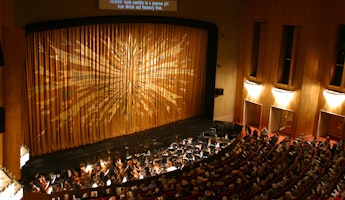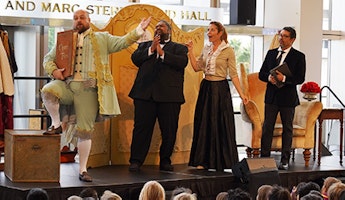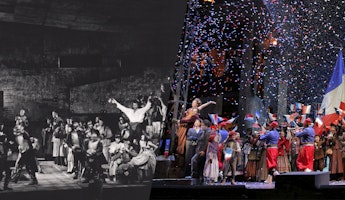Blog
February 6, 2024
"Highway 1, USA" Director Kaneza Schaal Note
Highway 1, USA represents an interesting moment in American history. A pivot of a thousand sorts, and artists caught between these moments. There is on one hand the American dream, the dream of the 1940s, hard work, meritocracy, the promise of the road and the west, and the kinds of independence that signified for African Americans, indeed for all Americans. But then there is this other model of success, a new thing that happened at that time when, for the first time, a university education became accessible for so many more folks: for Black folks, for G.I.s through the G.I. Bill. This was another order of aspiration. Composer William Grant Still and librettist Verna Arvey are thinking about all of this, which would eventually be the beginning of the end of the middle class.
So here are two models of success. Two models of hopes and dreams. Two models of where we ought to send the arrow of our aspiration. And what do we gain with that? What do we lose?
Still’s music itself is reaching to build a new world—you feel it in every note, this future building. The mythological path of the Highway. Its road of dreams. Its promises. And the filling station to ignite and fuel the journey.
While the libretto reads with the crisp clarity of a morality play, the music sends us into the complexity of thought in each character. We’re invited to consider the competing dreams and the different Americas they might birth. Mary begins the opera singing about the fox and hare, invoking the African American folklore of Br’er Rabbit and Br’er Fox, trickster figures that journeyed across the Atlantic from Africa. These tricksters remind us to listen to these struggles beyond moralism.
When I first listened to Highway 1, I kept getting swept off my feet into the strings, running a film score around in my mind. Then I remembered that falling is a familiar feeling, it’s the same swell and release of Wagner, or Verdi, or Puccini. And in fact, that film score in my mind, that sound was built in Hollywood studios by musicians who had played all those works and fled in exile to dream a new world.
This production is set in Still’s imagination, his own dream of what was possible for Americans, for music, for the future. The piece takes place in the cracks between when Still composed the opera in the 1940s and when it first premiered in the 1960s—I suppose that leaves us somewhere between the clean façade and dark underbelly of the 1950s. In that spirit of fracture, I looked at the works of James Rosenquist and Alma Thomas, two American painters, contemporaries of Still, who in very different ways address pieces and wholeness.
All of the action takes place in a small apartment—one could imagine a sitcom set, almost. Still composed Highway 1 alongside the birth of American sitcom, born of world war, a truly American form, for dreaming our aspirational class stories. Of course, so is the operatic canon, rife with class sagas, loving or wishing or dying beyond one’s station. Dangerous times have built many of the forms we come to take as familiar.
Tonight is a profoundly American night of music. Birthed from layers of exile, war, cruelty and dreaming that are the fabric of this country. The danger I feel today, in our global processing of war, our national election year terror, the both immediate and existential crisis that is global warming. There is a move right now to get a gun and sit on the porch, proverbially—strap up and go it alone. But perhaps if we remember our dreamers, the artists who built new worlds, and who left us blueprints to keep us stretching towards each other… we might do better.








/03-cosi/_dsc0996_pr.jpg?format=auto&fit=crop&w=345&h=200&auto=format)
















